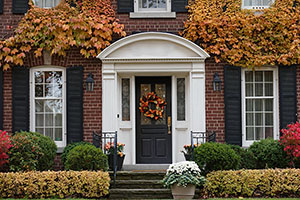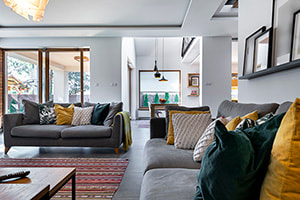 Fixer-upper homes are attractive for many reasons, including a lower sales price, less competition, and a relatively higher potential for resale profit. However, just like any other investment, there is risk involved in it. For one, fixer-uppers, which entail more added costs for repair and remodeling, can quickly become a bad investment. Avoid having your dream house turn into a nightmare by identifying the thin line between a fixer-upper and an outright bad investment. Condition | A fixer-upper requires mostly cosmetic improvements, while a bad investment requires both cosmetic and general structural improvements. Ideal fixer-uppers are those that need mostly cosmetic enhancements: paint jobs, floor refinishing, new lighting fixtures, and remodeled kitchen and bathrooms—everything that appeals to the eye. Certain structural improvements cannot be avoided, such as roofing, the heating and cooling system, and electrical wiring. On the other hand, a bad investment requires much more work, possibly to the structure or foundation, plumbing, or a terrible layout. These problems would require much higher costs than the amount you saved from buying it. Location | A fixer-upper is usually located in a desirable neighborhood, while a bad investment is on a busy street in an unsafe area. One of the strongest indications of a house’s market value is its location. Avoid buying fixer-uppers on a busy street, near a construction site, or in any other disruptive location. A wrong location for a fixer-upper significantly reduces your profit potential. Take note that you can improve only the house, not its position. After-Repair Appeal | A fixer-upper is a home everybody will love (and intend to buy) after you have made all repairs and renovation, while a bad investment is a house that, for some reason, nobody will want to buy, no matter how perfect it looks. There are numerous situations when a fixer-upper could be a bad investment. For example, few people want to buy a house with just two bedrooms in a neighborhood of mostly three- to four-bedroom homes. Or the problem could be location-related: The house may be near a river that overflows during heavy rains. The reason may also involve the layout, such as westward-facing windows that don’t get much sunlight. Avoid buying old houses with problems you cannot fix after a moderate renovation. A fixer-upper versus a bad investment could be hard to distinguish—consider the condition, location, and after-repair appeal. If you have questions about buying or selling real estate, reach out today!
0 Comments
 In uncertain times, it’s natural to look for ways to ensure our financial security. One option that can provide peace of mind is investing in real estate. Here’s how real estate investing can help provide financial security. Buying and selling real estate to make a profit is one of the oldest and most reliable ways to build long-term wealth. Real estate investments can be as simple as buying a property and renting it out, or as complex as developing a property. The key to success in real estate investing is finding sound investment opportunities and making smart decisions. With the current market conditions, now is a good time to start thinking about buying real estate. Here are some of the benefits of owning and investing in real estate: • Real estate is a tangible asset that can be used as collateral for a loan. • Real estate is a stable investment that historically increases in value over time. • Real estate rentals can provide passive income to supplement your income or retirement savings. Investing in real estate allows you to build equity in an asset that can be used as a source of funding for other investments or life goals. You can tap into equity by taking out a home equity loan or home equity line of credit (HELOC). One of the reasons real estate makes a great investment is because it’s an easily accessible asset you can see and feel, unlike stocks or other investments. It also has a low correlation with the stock market, meaning it’s not as volatile. Another great thing about real estate is you can use it for your own enjoyment, such as staying at a vacation home you rent out for most of the year. Remember, real estate appreciation is a proven way to make money in the long run. When you invest in a property, you’re investing in yourself and your future.  There's nothing quite like sinking into a comfy seat with a mug of your favorite drink and making small talk with a good friend. If you’re looking to create a relaxing, cozy conversation area, consider these four ways you can transform your living room. Whether you have a studio apartment or a sprawling estate, these design options can accommodate any home. U-shape | In a traditional U-shaped conversation area, the three sides of the U are formed by sofas, love seats, settees, or armchairs. The open end of the U is reserved for the focal point, such as a stunning fireplace, television, or a large window. Try placing a large square ottoman in the middle of the U at equal distance between the furniture pieces. You’ll want to leave enough space to pass between each sofa, love seat, or chair—about 22 inches. End tables placed between two armchairs or other seating are a great option to hold table lamps, pots of greenery, or beverage containers. Square Configuration | For the square-shaped design, furniture seating takes up all four sides of the conversation area. For smaller homes, place two love seats opposite each other and two armchairs facing one another to create the square. Situate a large round coffee table in the middle of the conversation area to hold your reading materials, a vase of flowers, or electronic devices. Make sure the coffee table is at least 18 inches from each of the seats. Last, try adding two end tables diagonally across from each other between the love seats and armchairs to hold table lamps. Parallel Sofas | This arrangement is created by positioning two identical sofas across from each other; it’s an especially useful design if you want an open walkway at each end of the sofas. Situate an oval or rectangular coffee table between the two pieces of furniture, not extending more than two-thirds the length of the sofas. Avoid placing a centerpiece in the middle of the coffee table, which will block the view between the sofas. Substitute smaller love seats or settees to accommodate an area with limited floor space. L-shape | An L-shaped conversation area leaves a larger accessible area than the other furniture groupings, working well to make a room seem open and spacious. A sectional sofa is ideal for creating the L configuration, but you can also place a sofa and love seat next to each other to create the L-shape. The interior corner of the sectional sofa is a natural place for an oversized round ottoman. Situate a tray atop the ottoman as a convenient spot to place drinks or snacks. If you are floating the sectional in the middle of a room, leave a three-foot clearance for major walkways in your home. Consider these four furniture layouts to create a comfortable, fun conversation area in your home. Choose the grouping that best suits your personal preference and physical space to enjoy time with friends and family to the fullest. |
AuthorA variety of pertinent real estate topics and tips from various authors and contributors. Archives
December 2024
Categorieshow much home can i afford?*
|


